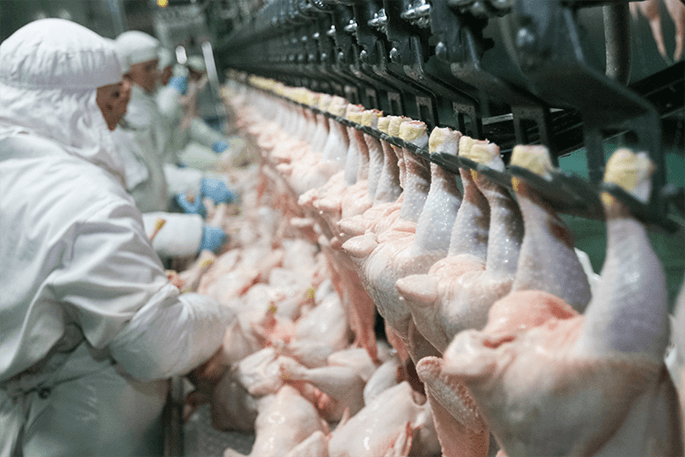INDUSTRY ISSUES
Food Safety
Food Standards are set by FSANZ – Food Standards Australia New Zealand which is a statutory authority within the Australian government. The Primary Production and Processing Standard for Poultry Meat is part of a series of national food safety standards. The poultry meat industry also complies with a range of Standards and Codes of Practice established by Governments, and private schemes, aimed at ensuring poultry meat is safe and produced in alignment with all the requirements for animal welfare and food safety.
With the exception of some foods such as sterilised foods in canned produce, all foods contain bacteria. Some of these bacteria are harmless and occur naturally as part of the normal microflora of the chicken gut. There are some strains however that can cause illness in humans such as Salmonella and Campylobacter.
Efforts to minimise these bacteria in the supply chain start at the breeding farms where the industry has concentrated on reducing any “bad” bacteria in breeding flocks to limit the possibility of transmission from parent hens to their day old chicks via the eggshell of the hatching eggs. Hatchery hygiene is critical to prevent the possibility of contamination of day old chicks.
Farmers monitor the chickens and turkeys closely “on farm” and maintain excellent hygiene to minimise the risk of diseases. Vets regularly monitor the chickens and turkeys to minimise the use of antibiotics by keeping the birds healthy. High quality feed, good attention to ventilation, pest control and good biosecurity all add to making your food as safe as possible. You complete the safety cycle in your kitchen, by cooking your poultry properly before you eat it.

There are a range of biosecurity measures implemented on chicken broiler farms to reduce the risk of introducing foodborne pathogens. For example, water supplies are treated to kill bacteria in the drinking water.

